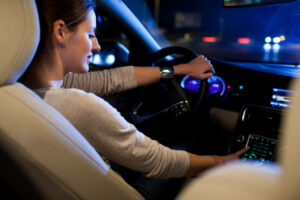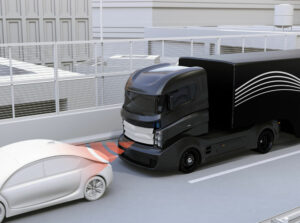
Canada cannot compete with what Mauritius and the Maldives have to offer, but there are plenty of beaches and resorts in its southern regions. Wasaga Beach in Ontario has the world’s longest freshwater beach, and it is a popular summer destination. Before heading home from the sandy shorelines, some people wonder if they should change first. Driving barefoot can be challenging for some, while others don’t find any discomfort in pressing the pedals with no shoes on.
While it isn’t illegal to drive barefoot, in some situations it might be worth it to take a couple of seconds to get your sneakers on. Let’s discuss these issues in more depth.
Legal Perspective
Across all provinces and territories in Canada, there is no legislation that specifically bans driving barefoot. Officially, there is no enforcement of what shoes and clothes you must wear when you get behind the wheel.
Although it is legal to drive barefoot, there are safety concerns you should consider. In case of an accident, the reduced protection on your feet may lead to extensive injury, which could have been mitigated to some degree by your shoes. In some driving emergencies (such as a fire), you may have to exit your vehicle immediately, but walking barefoot at that location may be uncomfortable or even dangerous.
You are also allowed to wear any type of footwear: flip-flops, sandals or even heels. As long as you safely control your vehicle, you can wear whatever footwear you want. But if you have trouble controlling the pedals, which causes you to drive erratically (or even worse, get into an accident), you might get charged with careless driving if you’re found driving barefoot or with inappropriate footwear. Careless driving is illegal in all Canadian provinces and territories. The penalties vary but typically consist of demerit points added to your driving record, a fine of at least several hundred dollars, and (depending on the jurisdiction and the circumstances) up to 6 months in jail. A conviction for careless driving will likely increase your liability insurance premiums as well.
Impact on Driving Performance
An expert driver shouldn’t encounter any problems driving barefoot, but most people are used to driving with shoes. Depending on the type of footwear, you may not be able to feel the texture, temperature and hard surface of a pedal.
These new senses might distract and confuse drivers when they start driving barefoot. Shoes provide a better grip on the pedals, which is crucial during emergencies. Driving barefoot might cause your foot to slip off the pedals at a critical moment due to sweat and moisture, especially if the pedal surfaces are metallic.
You also have to consider temperature and comfort. Pedals might become hot or cold, which could impair your ability to drive by causing discomfort and even pain. In older vehicles, pedals can be uncomfortable to press with your bare feet. This minor inconvenience is a major safety concern during long drives, where you’ll be stuck behind the wheel for hours on end.
What Should I Wear?
Professional racecar drivers use special shoes designed to enhance performance while also offering plenty of safety. You don’t have to go overboard and borrow a pair from your favourite NASCAR team, as there are several accessible alternatives you can consider.
Some experts say that it is better to drive barefoot rather than wearing certain shoes. Flip-flops or high heels can sometimes impair a driver’s ability to control the vehicle, and there is a serious risk that such footwear can get stuck between the pedals.
Loafers, boat shoes and soft-soled trainers are often recommended for their good grip, which also enhances the pedal feel. Since leather tends to mould to your foot’s shape, it also helps prevent moisture buildup that can cause slipping inside the shoe.
It can get cold in Canada, and when the first snowfall hits, people will likely switch their sneakers to boots. Remember that boots with thick and rigid soles make it difficult to feel the pedals with your feet. That’s why you’ll be more likely to accelerate and brake harder since you are no longer able to tell how much pressure is applied to the pedals.
Those who are wearing a larger shoe size might even find themselves pressing two pedals at once when there is a lack of tactile feeling. This situation is more common in wet conditions, especially if you’ve been walking in the rain.
In all cases, it is highly recommended to pay increased attention when you are not wearing your usual driving shoes. And the possible consequences of a traffic accident or a conviction for careless driving make it inadvisable to tempt fate.




